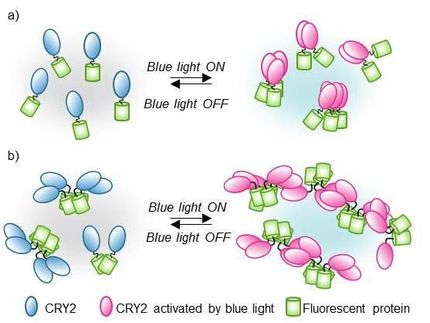Optogenetics: Light switch generates cellular second messenger
Light-sensitive protein from a fungus expands the optogenetic toolkit
As the research group under Prof. Alexander Gottschalk reports the protein CyclOp from the aquatic fungus Blastocladiella emersonii produces the second messenger cGMP when exposed to light. This important cellular signal is involved in vision, regulating blood pressure, induced cell death and also male erection. The compound Viagra, for example, leads to an increase in the cGMP level in the cells. If CyclOp is introduced to an organism like the nematode Caenorhabditis elegans, then one can specifically study cGMP-dependent signal pathways within the cell. This allows optogenetics to go a step beyond previous research.
"The light-activated enzyme CyclOp has outstanding molecular properties which qualify it as a valuable addition to the optogenetics toolbox for cell biologists and neurobiologists", explains Prof. Gottschalk from the Buchmann Institute for Molecular Life Sciences (BMLS) at Goethe University. His research group has introduced the protein into oxygen sensing cells in order to find out what role the second messenger cGMP plays in these cells. To do so, the translucent nematode is exposed to light leading to intracellular generation of cGMP. The cells respond by acting as if they had detected an increase in the oxygen level. In this way the researchers can use CyclOp to get a better understanding of how the natural signal for these cells is turned into a cellular response.
Original publication
Most read news
Original publication
S. Gao, J. Nagpal, M. Schneider, V. Kozjak-Pavlovic, G. Nagel, A., Gottschalk A.; "Optogenetic manipulation of cGMP in cells and animals by the tightly light-regulated guanylyl-cyclase opsin CyclOp"; Nature Comm.; 2015
Topics
Organizations
Other news from the department science

Get the life science industry in your inbox
From now on, don't miss a thing: Our newsletter for biotechnology, pharma and life sciences brings you up to date every Tuesday and Thursday. The latest industry news, product highlights and innovations - compact and easy to understand in your inbox. Researched by us so you don't have to.

























































